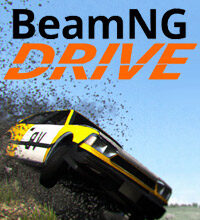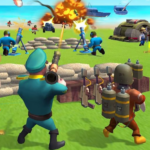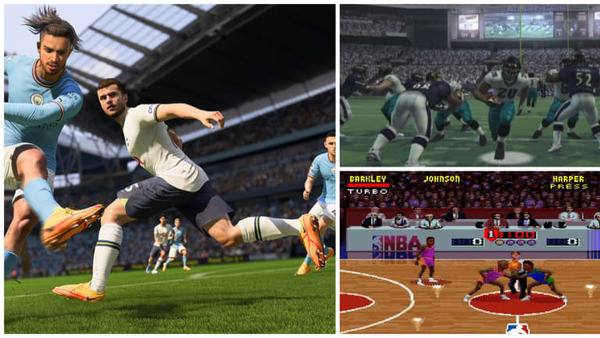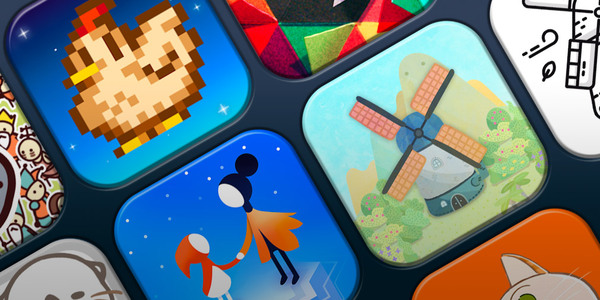BeamNG.drive is a unique and deeply immersive driving simulation game developed and published by BeamNG GmbH. Released in early access in 2015 and continuously updated since then, BeamNG.drive stands out for its groundbreaking use of soft-body physics, allowing for highly realistic vehicle deformation, crash dynamics, and driving behavior. Unlike traditional racing games focused on competition or high-speed thrills, BeamNG.drive emphasizes experimentation, sandbox-style freedom, and realism in vehicle handling. It is a technical marvel and a digital playground for gearheads, modders, engineers, and casual players who love the open-ended possibilities of an expansive driving simulator. With a growing fanbase, massive modding support, and a continuous stream of updates, BeamNG.drive has evolved into a platform for creativity, education, and innovation.
The Origins and Vision Behind BeamNG.drive
BeamNG.drive traces its roots back to a group of modders who previously worked on the Rigs of Rods open-source driving simulator. The team behind BeamNG GmbH aimed to create a new engine from scratch, focusing on realism and accurate soft-body physics. Their vision was to simulate every part of a vehicle in real time, from the suspension system and tires to frame flex and crash responses. When the tech demo of BeamNG.drive was released in 2013, it immediately captured the attention of driving enthusiasts and simulation fans. The full early access release in 2015 expanded on that initial promise, offering a range of vehicles and maps and laying the groundwork for an entirely new approach to vehicle simulation. The developers set out not just to make a game, but a tool for automotive simulation and experimentation.
Soft-Body Physics: The Heart of the Experience
BeamNG.drive’s most celebrated feature is its soft-body physics engine. Unlike typical racing games that use rigid-body physics, BeamNG simulates every node and beam in a vehicle’s structure. This allows cars to bend, crumple, twist, and break in a way that mirrors real-world crashes and mechanical stress. Each vehicle behaves like a real machine, affected by gravity, inertia, and road surface friction. If a player drives into a wall at high speed, the car doesn’t just bounce or stop—it deforms based on speed, angle, and impact point. This realism extends to suspension dynamics, tire grip, and engine behavior. Whether a car is skidding on ice, crawling over rocks, or flipping off a jump, every motion is grounded in physics. It’s not just visually impressive—it impacts how players drive and plan every maneuver, adding depth and challenge.
Vehicle Variety and Customization
BeamNG.drive includes a diverse lineup of vehicles ranging from small city cars and pickup trucks to buses, off-road crawlers, and racing machines. These vehicles are fictional but heavily inspired by real-world counterparts, offering a rich spectrum of driving experiences. Each car is meticulously modeled and features detailed subsystems, including customizable engines, transmissions, differentials, and brakes. Players can swap parts, tune suspensions, adjust tire pressure, and modify aerodynamics. Beyond built-in customization, the modding community provides an enormous array of additional vehicles. From hypercars and classic muscle cars to motorcycles and tanks, the variety is nearly endless. Some mods even replicate real-world vehicles with stunning accuracy, both visually and mechanically. This diversity ensures that players can tailor their driving and crashing experiences to their exact tastes, whether for racing, testing, or destruction.
Maps, Terrains, and Driving Environments
The game features a wide range of maps designed for various types of driving and testing. From cityscapes and racetracks to forests, industrial zones, and deserts, each map offers unique challenges and aesthetics. Maps like West Coast USA, East Coast USA, and Italy provide large open-world areas with detailed road networks and natural terrain. Others like Gridmap are testing grounds with ramps, loops, and surfaces meant for experimentation. Weather and lighting settings allow players to simulate day-night cycles and seasonal effects, adding further immersion. The terrain system is robust, with deformable surfaces, elevation changes, and interactive objects. Players can drive through mud, snow, or water, affecting vehicle behavior in realistic ways. Coupled with the soft-body physics, these environments elevate BeamNG.drive beyond traditional driving games—it becomes a simulator of possibilities.
Career Mode, Scenarios, and Campaigns
Although BeamNG.drive is primarily known for its sandbox elements, the developers have steadily built out structured gameplay features such as Career Mode and Scenarios. Career Mode introduces progression-based gameplay with missions, economy, vehicle purchasing, and garage upgrades. Players can earn in-game currency by completing tasks like towing, racing, or stunt driving. This adds purpose and long-term goals to the open-world structure. Scenarios offer curated challenges, from time trials and delivery missions to police chases and endurance runs. Campaigns bundle multiple scenarios into themed experiences, often introducing story elements or escalating difficulty. These modes help introduce new players to the game’s mechanics and provide goals beyond pure exploration. Although still under development, the structure adds meaningful context for players who prefer direction over total freedom.
Modding and Community Contributions
One of the most vibrant aspects of BeamNG.drive is its modding community. The game includes robust mod support and an in-game repository for downloading new vehicles, maps, scripts, and gameplay extensions. Modders have added drag strips, airplane simulations, new terrains, and even functioning traffic systems. Some mods introduce entirely new game modes like demolition derbies, rock crawling challenges, or mechanical failure simulations. The community also collaborates to improve realism, fixing bugs, or enhancing existing vehicles with higher detail. BeamNG GmbH encourages modding by providing documentation, developer tools, and a welcoming attitude. The modding scene extends the game’s lifespan indefinitely and turns BeamNG into a shared platform of creativity and technical experimentation.
Realism vs Accessibility: Balancing the Experience
BeamNG.drive walks a fine line between being a hardcore simulation and an accessible sandbox. On one hand, the vehicle handling, crash dynamics, and environmental physics are tuned for realism. On the other, the controls are intuitive, and players can enable assists, disable damage, or activate slow motion to suit their style. The game allows for granular control over simulation depth. For example, advanced users can use clutch and manual gear shifting with force feedback wheels, while casual players can stick to keyboard controls and automatic transmissions. The inclusion of AI traffic, simple UI elements, and respawn options helps lower the entry barrier. This balance makes the game approachable for a wide audience, from engineering students testing car mechanics to YouTubers creating cinematic crash compilations.
Educational and Practical Applications
Beyond entertainment, BeamNG.drive has significant educational value. Its physics engine is used by schools, universities, and researchers to simulate automotive crashes, stress responses, and vehicle dynamics. Engineering students can explore the effects of material deformation, torque transfer, and fluid dynamics in an interactive way. The game is also used in driver education and crash safety demonstrations. Its scripting tools allow for automation, telemetry analysis, and custom test conditions. For budding programmers or game developers, BeamNG offers a chance to learn LUA scripting and environmental design in a practical setting. Instructors can use it as a controlled environment to teach physics, design, or traffic safety. This dual purpose—fun and functional—sets BeamNG.drive apart as a digital tool as well as a game.
Visual Presentation and Performance Optimization
While BeamNG.drive is not built to compete with AAA racing games in terms of photorealism, its visual presentation is clean, functional, and steadily improving. Vehicle models are detailed, lighting is dynamic, and effects like smoke, debris, and particle damage add visual flair. Recent updates have introduced new rendering pipelines, PBR (physically based rendering), and improved shadows and reflections. Optimization remains a focus, as the physics simulations can be CPU-intensive. Performance depends heavily on hardware, especially when simulating multiple vehicles or complex collisions. Fortunately, the developers offer flexible graphics settings and the ability to limit simulation detail. The user interface has also seen consistent refinements, with new menus, customization sliders, and accessibility options enhancing usability. For players with high-end rigs, BeamNG can be visually impressive while still prioritizing simulation accuracy.
Conclusion:
BeamNG.drive is more than a game—it is an evolving platform for simulation, learning, and creativity. Whether you're crafting a cinematic car crash, testing your driving skills on rugged terrain, or analyzing vehicle physics in a school project, BeamNG delivers a level of detail and realism rarely seen in interactive media. It blurs the line between entertainment and education, giving users the freedom to play, learn, and explore at their own pace. As the developers continue refining and expanding the experience, BeamNG.drive stands poised to influence not only how we play, but how we understand the complex systems behind every vehicle. For those who appreciate simulation, experimentation, and the raw thrill of physics-driven destruction, BeamNG.drive is a must-have title that continues to redefine what's possible in a driving simulator.

 99 Nights In The Forest Roblox
Among the wave of horror-themed survival games on Roblox, 99 Nights In The Forest carves out a unique place by combining psychological tension, environmental dread, and strategic multiplayer gameplay. Set in a cursed forest where players must survive 99 increasingly intense nights, this game delivers a blend of crafting, cooperation, base-building, and fear.
Read full review
99 Nights In The Forest Roblox
Among the wave of horror-themed survival games on Roblox, 99 Nights In The Forest carves out a unique place by combining psychological tension, environmental dread, and strategic multiplayer gameplay. Set in a cursed forest where players must survive 99 increasingly intense nights, this game delivers a blend of crafting, cooperation, base-building, and fear.
Read full review
 Roblox – Steal a Brainrot
Roblox – Steal a Brainrot is one of the most hilariously chaotic and strategic games to hit the Roblox platform. Combining stealth mechanics with absurd humor, this game lets players infiltrate guarded environments to steal strange NPCs known as brainrots.
Read full review
Roblox – Steal a Brainrot
Roblox – Steal a Brainrot is one of the most hilariously chaotic and strategic games to hit the Roblox platform. Combining stealth mechanics with absurd humor, this game lets players infiltrate guarded environments to steal strange NPCs known as brainrots.
Read full review
 Roblox: Grow a Garden
Explore the ultimate Roblox: Grow a Garden review—gameplay, farming tips, events, pros and cons, and expert strategies to thrive.
Read full review
Roblox: Grow a Garden
Explore the ultimate Roblox: Grow a Garden review—gameplay, farming tips, events, pros and cons, and expert strategies to thrive.
Read full review
 REMATCH
Experience the intensity of a rematch game as rivals clash once more to settle the score. Who will come out on top this time?
Read full review
REMATCH
Experience the intensity of a rematch game as rivals clash once more to settle the score. Who will come out on top this time?
Read full review
 Dune: Awakening
Dune: Awakening is a thrilling survival MMO set on the harsh desert planet Arrakis, where players must build, fight, and strategize to conquer the sands and thrive against deadly threats.
Read full review
Dune: Awakening
Dune: Awakening is a thrilling survival MMO set on the harsh desert planet Arrakis, where players must build, fight, and strategize to conquer the sands and thrive against deadly threats.
Read full review
 Zoonomaly
Zoonomaly is a post-apocalyptic survival horror game where players face mutated wildlife, explore hostile environments
Read full review
Zoonomaly
Zoonomaly is a post-apocalyptic survival horror game where players face mutated wildlife, explore hostile environments
Read full review






























